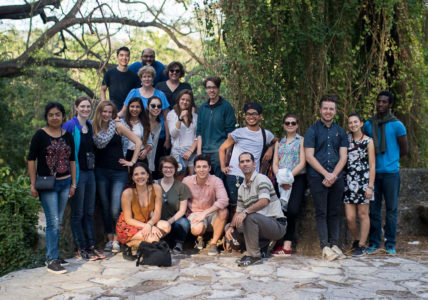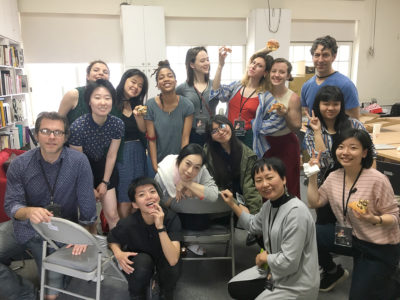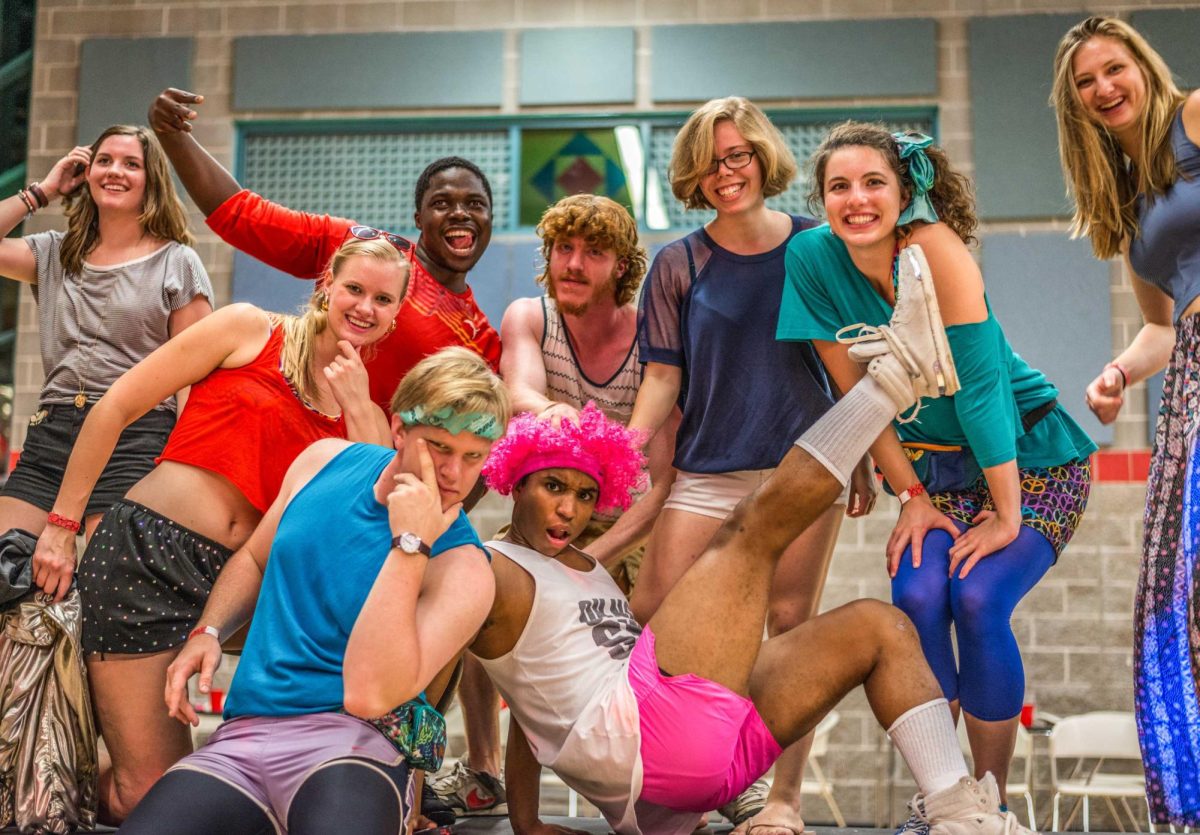
By Ahon Gooptu
gooptuah@grinnell.edu
Over spring break, five professors and 38 students traveled overseas as part of three different courses.
Professors Shannon Hinsa-Leasure and Susan Ferguson, biology and sociology respectively, accompanied 15 first-year students in the Global Learning Program to Cuba and Costa Rica. The course, which investigates the structure of health care systems in United States as compared to the ones in Costa Rica, Cuba and Denmark, attracted applicants interested in a range of issues associated with the topic.
“Coming here, one of my biggest academic interests was public health — and obviously, travel, when it’s covered by the school, is very appealing. … To be able to learn outside a classroom, to see the real situations, that was one of the main reasons I applied,” said participant Jasper Yang ’21.
The students visited several hospitals, clinics and nursing homes, traveling every step of the way with respected and experienced doctors. Yang really appreciated the magnitude of access that they had to these individuals, who were only too happy to share their stories.
The preparation for the trip (which included both readings and Skype-in conference calls with guests) had been intense in the first half of the semester, leaving most of the lecturers in Cuba and Costa Rica really surprised by the amount that the students already knew. But culturally, there were many things that took the students by surprise. Yang, who had a preconceived notion of Cuba thanks to its disreputable representation in American media, was quite taken aback by some of the “liberal paintings” and “loud expressions” in an art museum, such as a clown in the military or people portrayed kissing with a barrier of condoms between their lips.
Sammie Stagg ’21, who was more interested in the nutrition side of global health, reminisced about the bond that the students shared by the end of the trip.
“Going into the trip, even though we had spent half the semester together, we didn’t really know each other that well outside of class, besides a friendly ‘hello’ every so often. … Halfway through the trip, the program coordinator in Cuba looked at us and said, ‘I’m surprised you guys didn’t know each other, you act like brothers and sisters!’” Stagg said.
The class will be traveling to Denmark at the end of the semester for an additional half credit to explore the health care systems there.
Students taking “Art, Media and the Built Environment Within the Revolution in Cuba” also traveled to Cuba with Professor Fredo Rivera, art and art history.
Nicole Rosengurt ’20, who has a special interest in the Soviet influence in Cuban art as well as the intersection of politics and art, recalls reading about the different political scenarios that Cuba witnessed prior to the 1959 revolution as primary preparation for the trip.
One of the stops on the trip, the National Art School in Cuba, symbolizes both the highest and lowest points of the revolution for Rosengurt. This is because of the historical and cultural significance of the Art School right after the revolution, as well as its failure after being militarized. She also appreciated the fact that they did not stay in one part of the island for too long and instead got to see the metropolitan side, the rural side and the commercial hubs of Cuba.
For the second half of the semester, the students have been divided into groups in order to focus on specific parts of Havana, from museums to their version of Broadway. The goal is to create distributable media packets, similar to the ones in Cuba, and a final presentation scheduled in early May highlighting each of the segments being explored.

“Just For You,” a class comprised of four studio art majors and four theatre majors, culminated in a series of collaborative performances-for-one in Taipei, Taiwan’s Museum of Contemporary Art (MOCA). They traveled across the Pacific to Taipei with Professors Andrew Kaufman and Craig Quintero, art and art history and theatre and dance respectively.
Preparation for the course involved exploration of what sense, intimacy, the subconscious and ventriloquism meant to the performers. From basement installations with cloths and mirrors creating disjointed images, to a divide made with string in the curved corridor behind Sebring-Lewis, the students created their own performances-for-one in Grinnell before traveling. But many ideas during the course of the class were not even used in the final performance or the space that they created themselves.
“How do you build the performance if you don’t know what the space is like and how do you build the space if you don’t know what the performance is going to be?” said Judith Chong ’20.
The team managed to decide on their final performance two days prior to the first show, which left many in tears. A lot of the performance was less about the content and more about the experience of connecting.
“There was a lady who was terrified by what was happening in there. She was shivering and it seemed like she was going through some personal stuff,” said Sooji Son ’18.
For Yi-Chia Wang ’20, who is from Taiwan, this trip marked the second time she traveled to Taiwan as part of a course. Although she spent most of her time painting and joint compounding before joining her classmates in 63 performances over five days, she did make time to go home this time around.


















































